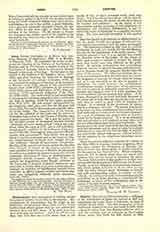

Denver, Diocese of (DENVERIENSIS), a suffragan of the Archdiocese of Santa Fe, erected in 1887 and comprising the entire State of Colorado, an area of 103,645 square miles. The first permanent civilized settlement within its borders was made in 1852, when a Spanish colony from New Mexico settled in what is now the southern part of Colorado on the Conejos River, where they built the first church in 1858.
Similar settlements followed during the fifties, their spiritual needs being provided for by priests sent by Bishop Lamy of Santa Fe, whose diocese then extended as far north as the Arkansas River, the boundary of the Mexican cession. The discovery of gold, in 1858, near the site of the present city of Denver, soon brought a great increase of population from the Eastern States. Mining camps and towns sprang up in great numbers throughout the whole Pike’s Peak region. This territory was then a part of the vicariate of Bishop Miege of Leavenworth, and that prelate visited Denver in 1860. Finding it practically impossible to attend these distant missions, Bishop Miege secured their transfer to the jurisdiction of the Bishop of Santa Fe. Bishop Lamy sent his vicar-general, the Very Rev. Joseph P. Machebeuf, and a young priest, Rev. John B. Raverdy, to care for the mining regions and the new settlements. Father Machebeuf had spent eleven years in the missions of Northern Ohio, and ten years in similar work in New Mexico and Arizona, and was thus admirably adapted for the work before him. The two missionaries arrived at Denver in October, 1860, and for over seven years they labored, almost unaided, visiting the immense territory confided to them, building churches wherever the prospects warranted such an undertaking.
The increase of population was so great during those early years, and the prospects of permanency became so favorable that the Fathers of the Second Plenary Council of Baltimore recommended to the Holy See the creation of the Vicariate Apostolic of Colorado and Utah. Consequently Father Machebeuf was nominated to that office and was consecrated titular Bishop of Epiphania at Cincinnati by Archbishop Purcell, August 16, 1868. The new prelate was born August 11. 1812, at Riom, Puy-de-Dome, France. He was ordained priest December 21, 1836, at Clermont-Ferrand, the see of his native diocese. When he took charge as vicar Apostolic he had but three priests within his jurisdiction, but he returned to the field of his work and redoubled his own efforts, visiting every portion of his vast vicariate, doing the work of priest and bishop and endeavoring at the same time to secure priests for the rapidly increasing population. His zeal for religion was shown also by his many efforts to secure locations for future churches, charitable and educational institutions, several of which were built in his own time—notably, the Loretto Academy at Denver, in 1864, and later St. Joseph‘s Hospital, the House of the Good Shepherd, and the College of the Sacred Heart. In 1871 his burdens were somewhat lightened by the transfer of the Territory of Utah to the jurisdiction of the Archbishop of San Francisco. By Brief of August 16, 1887, the Vicariate of Colorado was made a diocese with the episcopal see at Denver; and the Rev. Nicholas C. Matz appointed coadjutor with right of succession (August 19, 1887). He was consecrated titular Bishop of Telmessa, at Denver, by Archbishop Salpointe of Santa Fe, October 28, 1887. Bishop Machebeuf nevertheless relaxed but little of his missionary work after this, and retained the administration of the diocese until his death, on July 10, 1889, leaving in the diocese 34 secular and 30 regular priests, 112 churches and chapels, 1 college, 9 academies, 9 hospitals, 2 asylums, and over 3000 children in Catholic schools.
Bishop Matz, who was born April 6, 1850, at Munster, Lorraine, France, and ordained priest at. Denver, May 31, 1874, continued the good work of his predecessor. The diocese contains (1908) 62 secular priests, 71 priests of religious orders: Jesuits, Benedictines, Franciscans, Dominicans, Redemptorists, Servites, and Theatines, engaged in parish and educational work, 2 colleges for young men with 261 students, 531 religious women of 15 different institutes: the Sisters of Loretto, Charity (Mt. St. Joseph, Ohio), Charity (Leavenworth, Kansas), St. Joseph, Mercy, the Good Shepherd, Third Order of St. Dominic, St. Francis, St. Benedict (Chicago, Illinois), Charity B. V. M. (Dubuque, Iowa), St. Francis of the Perpetual Adoration, Missionary Sisters of the Sacred Heart, St. Benedict (Erie, Pennsylvania), St. Joseph (Wichita, Kansas), St. Francis of Assisi. There are 4 orphan asylums with 588 children; an industrial and reform school with 225 inmates, a home, 15 hospitals with 11,300 patients annually, 10 academies with 900 pupils and 25 parish schools with 6600 children. The theological students number 10. There are 60 churches, 91 chapels, 140 stations, and a Catholic population of 99,485. The Sacred Heart Orphanage at Pueblo, sheltering 150 children, owes its existence and partial endowment to the generosity of Captain John J. Lambert of Pueblo, an exemplary Catholic prominent in works of charity and zeal. The English language is generally used, but in many of the mining districts and industrial centers there is a necessity for the Italian and Slav languages, while Spanish is usually spoken in the southern parishes. There is no diocesan debt, and the individual churches and institutions are solvent and prosperous.
W. J. HOWLETT

